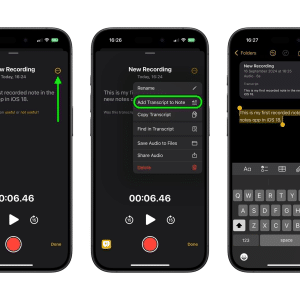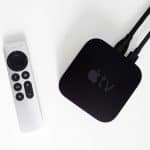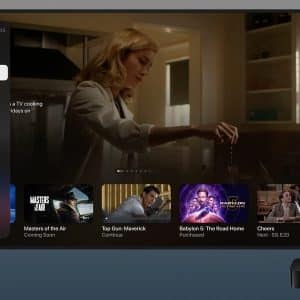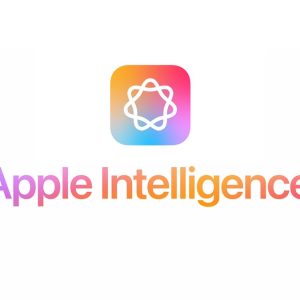Feb. 14–In the long history of technology innovation, the iPad is an infant. But since its unveiling three years ago, the skinny, 10-inch wonder device has been transforming education at every level. It’s changing how teachers teach and improving how students learn.
The improvement has been so dramatic that — despite the cost — some schools have begun issuing iPads to every child.
Williamsville is the latest example. Every fifth-grader at Heim Middle School in the Williamsville district recently received an iPad2 as part of a one-year pilot program that will eventually translate into the biggest public school iPad distribution effort in the region.
Starting next school year, the district will spend about $300,000 equipping every fifth-grader across the district with one of the hot tablet devices.
That’s about 800 kids who each will have his or her own iPad to bring to school and take home for the duration of the school year. The following school year, sixth-graders also will get them. If all goes as planned, all Williamsville middle school students will be individually iPad- equipped within four years.
“It was almost like winning the lottery,” teacher Brandon Sanders said of student reactions to receiving their tablets two weeks ago.
Certainly, Heim Middle School isn’t the first public school in the region to use iPads in the classroom. These days, many schools have carts of iPads that move from classroom to classroom and grade to grade.
Third-graders at Windom Elementary School in Orchard Park, for instance, are currently creating their own nonfiction books using the devices.
Prior to Heim receiving 200 iPads, the Williamsville district already had about 1,300 iPads distributed among its elementary, middle and high schools, said Peter Ciarelli, the assistant superintendent for technology services.
But one-to-one student-to-iPad programs are still relatively rare in public school settings.
Roy B. Kelly Elementary School in the Lockport school district was the first in the region to adopt such a program, in 2010-11, when the school began a three-year study with the University at Buffalo to see if iPad use translates into improved academic achievement.
Every kindergartener got an iPad that first year. Now students through third grade — about 100 of them — have their own iPads, and fourth grade will be added in the fall, said Principal Marianne Currie-Hall. Anecdotally, she said, the bump in student performance has been significant.
“It’s transforming instruction,” she said. “I’ve got kindergarteners who email me their work.”
This school year, the 700-student Pine Valley Public School District in Chautauqua County distributed iPads to all students in grades five through nine, as well as to all high school honors students.
Third-graders are getting iPads this week, said Superintendent Pete Morgante. By next school year, every child from third grade through high school will have one.
The iPad distribution program in Williamsville will eclipse all others in the region. Though the fifth-graders at Heim have only had their iPads a short time, the change in classroom instruction has been huge.
No more stumbling over unknown words in reading class. A light tap on the electronic page calls up the definition from Webster’s Dictionary. Fifth-grader Breann Wilson quickly called up the definition for the word “reap” during a passage about harvesting in her e-book, “Esperanza Rising.”
No more class trips to the computer lab for academic research. Facts and images now appear before each student in seconds. That’s how 10-year-old Arnav Patra learned about the Canadian region of Nunavut.
“It’s a territory, actually,” he corrected.
No calling on one student at a time to gain correct answers. For many teachers, feedback is now instantaneous.
Students register their answers on their iPads, and teachers use polling software to tally class responses. Kids who get the answer right can have their iPad work projected overhead for all their classmates to see.
Emma Belica, 11, said her math teacher had everyone hold up their iPads to show her how they answered a math problem involving division with decimals “instead of only one person answering the question.” In some cases, the teacher was able to show how different students used different strategies to arrive at the correct answer.
Finally, no more lost classroom time spent writing down homework assignments at the end of each class. All assignments are automatically downloaded and completed on the iPad. Samantha Ingham, 10, reported that her backpack is a lot lighter these days.
So did Jacob Schlau, a fifth-grader at the school who never had an iPad and was pretty sure he’d never want one. That all changed the moment he held one in his hands.
“I fell in love with it,” he said.
An admittedly disorganized person, 10-year-old Jacob said he used to spend considerable time sorting through mounds of papers in the hunt to find his homework assignments each day. He’d often worry that he left papers behind in his locker.
Now that everything is on his electronic tablet, he’s shocked himself by turning in everything on time.
“It might just be luck,” Jacob mused, “but I think it’s the iPad.”
A few teachers also observed that students who have greater difficulty learning are finding the iPad to be a great equalizer, allowing them to participate more fully in class, interact more easily with the learning material, and catch up faster on remedial work at home.
“I feel like it’s starting to close that gap for them,” said special-education teacher Laura Lukasik.
Internet access is still restricted on the iPads by a content filter to make sure children aren’t exposed to inappropriate material.
Like their textbooks, the iPad devices will stay with these students until the end of the school year, when the fifth-graders must turn them back in.
Heim Middle School is piloting the iPad program because it has the smallest number of fifth-graders, about 165.
“It made sense to do this at a smaller school so we could work out some of the bugs,” Ciarelli said.
And there are some bugs to work out. The Internet content filter, for instance, has been causing some technical glitches, and the district still hasn’t found a way to purchase all the e-books it needs without having to create individual Barnes & Noble accounts for every fifth-grade iPad user at Heim. That’s cumbersome.
Regardless, technology integrator Lee Ferenc and Principal Valerie Keipper said the staff at Heim has rolled with the punches and embraced the technology.
Teachers are showing up after school for Ferenc’s voluntary lessons on how to incorporate the iPads into their lesson plans. And they’re turning to their own students, who are more than happy to show their teachers how to use the iPads better and faster.
“In many ways, they’re more familiar with the technology than I am,” said teacher Joe Roche.
Teacher Amy Chiavetta said she’s already had her students create video book reviews with scannable QR codes that will enable anyone curious about a library book to scan the attached two-dimensional code with their iPad and immediately access the video review by their peers.
Meanwhile, the school’s physical education and music teachers already have asked for the iPads to be outfitted with student fitness trackers and music lesson schedules.
Ferenc said he’s amazed at how quickly teachers are putting the iPads to use.
He said, “They’re already running with it.”
The Buffalo News
(c)2013 The Buffalo News (Buffalo, N.Y.)












